


















































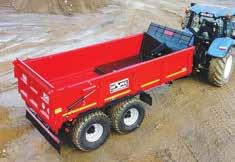
FONTERRA IS getting a clear message from farmer shareholders – don’t burden them with new requirements and costs.
With the forecast milk price falling, soaring interest rates and higher than normal input costs, farmers are in no mood right now to face scope three emissions target, first flagged by Fonterra at its last annual meeting in November.
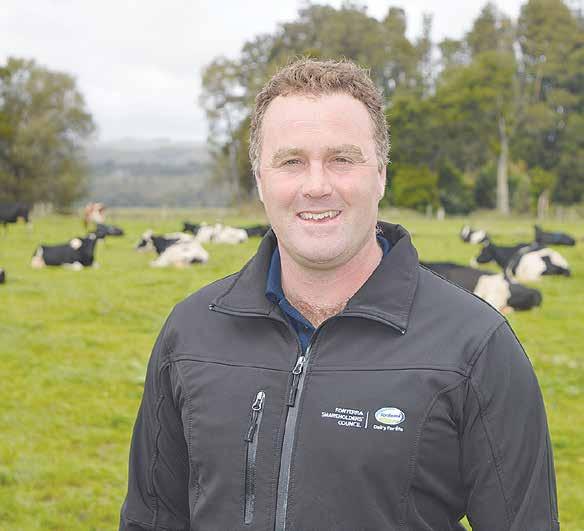
The scope three target relates to emissions behind the farmgate. Fonterra is under increasing pressure from major customers like Nestlé to improve its scope three emissions profile.
The co-operative had initially planned to release its scope three target in June.
Fonterra Co-operative Council chair John Stevenson told Dairy News that a scope three emissions target is not something on the minds of shareholders right now.
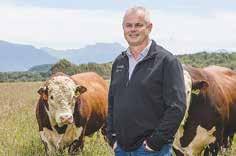

Stevenson says things are tough on farm right now, from weather through to the current financial situation.
“Many of our farmers are still flat out calving so a scope three emissions target and what it may mean for them is far from their minds,” he says.
Asked if the time is right for Fonterra to introduce scope three target, Stevenson says it depends on what farmers will be required to do.
“Council has no visibility of when the target will be released, and what will be required on farm.
“Council will be in a position
to comment further once we have more clarity.”
Federated Farmers dairy section chair Richard McIntyre wants the co-op to make things easy for farmers.
“I’m not going to tell Fonterra how to run their business – they’re much closer to the customer than I am and at the end of the day, they need to be able to make business decisions based on the information they have in front of them,” he told Dairy News
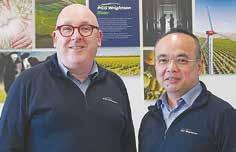
“But what I will say as a Fonterra supplier is that if they are going to be putting new requirements or costs on farmers, they better be bloody sure they really are necessary.
“There’s a lot of pressure out there at the moment, and some farmers are really hurting, so they need to make things as easy and cost effective as they can for farmers.”
Fonterra has warned that if farmers fail to address scope three emissions, major customers could look
elsewhere for products and even switch to plant-based dairy.
Stevenson points out that decisions around scope three sit squarely with the board and management.
“We have conveyed to the board the current tough situation on-farm now, and are here to represent the views of our farmers.
“Once we have an idea of the on-farm impact of any scope three announcement, we will be able to comment further.”
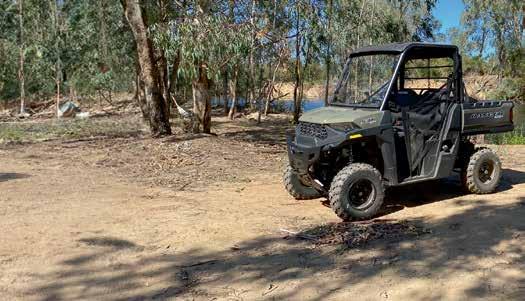 KISSUN
KISSUN
FONTERRA FARMERS are cutting costs on farm and expect similar discipline from their co-operative.
Fonterra Co-operative Council chair John Stevenson says farmers are feeling a real squeeze with increased input costs and decreased returns.
He points out that, at the current forecast milk price range, many stand to make losses in the current financial year.
“Farmers tell me that they are being ruthless as they look at what is essential expenditure within their own businesses, and what is not,” Stevenson told Dairy News
“They have sent a clear message to council, which has been passed on to the Fonterra board chair, that they expect similar discipline within their co-operative when it comes to managing costs.”
With Fonterra slashing its forecast range mid-
FONTERRA MAY need to provide additional support to cash-strapped farmers if the forecast milk price continues to fall
However, another lift in the advance rate would be risky as Fonterra could end up overpaying farmer suppliers and be forced to claw back money
Fonterra Co-operative Council has previously pushed hard for more cash to be returned to farmers quicker

Council chair John Stevenson says, as a result, Fonterra changed its advance rate guidelines to pay farmers a higher percentage of the forecast milk price earlier
But he adds that further increases to the advance rate would come with an increased risk of Fonterra over-paying if there are further declines in milk price
This month, Fonterra shareholders received $6/ kgMS as advance rate for milk supplied in July

However, for the rest of the year, farmers can expect $5 25/kgMS in advance rate from Fonterra
“There is a long way to go in the season yet,” Stevenson told Dairy News
“If we continue to see challenges around milk price then there will likely be increased calls for Fonterra to use the strength of its balance sheet to support its owners
point by $1 to $7/kgMS, many farmers are bracing for a loss this season.
According to Stevenson, depending on debt levels and internal cost structures, $7/kgMS is widely accepted as being below the cost of production. He believes farmers will likely be
working closely with their banks as they look to fund current cashflow requirements.
One silver lining will be the upcoming $800 million capital return to shareholders this month.
Fonterra has also signalled a strong dividend – a result of
Fonterra farmers are keeping costs down on farm and want their co-op to do the same.
lower milk price lowering the cost of production for value added products.
Stevenson says
Fonterra shareholders will be looking forward to the upcoming capital return and the prospect
of a strong dividend as they consider how their businesses are funded at the current mid-point of
milk price range.
FARMERS ARE being urged to budget on a milk price in the lower half of Fonterra’s present guidance range, $6.25 to $7.75/kgMS.
ASB economist Nat Keall says there is plenty of uncertainty at this stage in the season.
“There are some upside risks as
well as downside ones.
“Nonetheless, we think it is prudent for farmers to be budgeting on a milk price in the lower half of Fonterra’s present guidance range.”
ASB has lowered its forecast milk price to $6.60/kgMS.
Westpac is sticking to its $7.50/
kgMS forecast, which was revised this earlier this month.
Westpac senior agri economist Nathan Penny says they had expected prices to continue to fall in the short term.
“Recall that global demand is weak, notably from our key market
in China.” However, the fall in last week’s Global Dairy Trade (GDT) auction was larger than expected.
“And while it is difficult to read too much into one auction result, it does point to prices potentially falling by more than our updated forecast suggests,” says Penny.
“To that end, Fonterra’s forecast range is a useful tool to keep in mind.
“After Fonterra’s recent update, the range stands at $6.25 to $7.75.
“Indeed, we continue to note that it’s still early days in the season and a wide range of milk prices are possible,” says Penny.
Jarrod Rider believes happy cows and staff should be the bottom line of dairy farming.
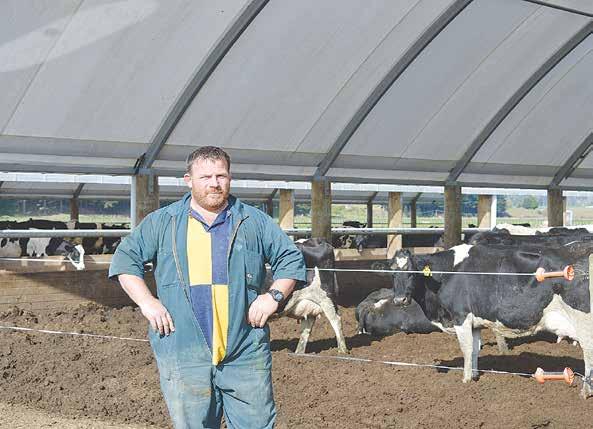
The rest – like milk production and profitability – sorts itself out.

With this philosophy in mind, Rider decided three years ago that the days of getting stuck in muddy paddocks, treating down cows, and picking up newborn calves from paddocks at night must end.
He began looking at cow shelters for his 155ha farm at Shannon.
Three years and a million-dollar investment later, Rider is confident he’s at a happy place now.
Two SmartShelter barns – clearspan structures measuring 28m x 70m each – house the cows for eight weeks during winter.
According to Rider, the results are amazing and continue to get better.
“We are growing cow condition every year and our pastures are being looked after and we are getting more grass,” he told Dairy News
Feed savings are rising and there’s little wastage. On hot summer days, cows spend time in the SmartShelter barns which
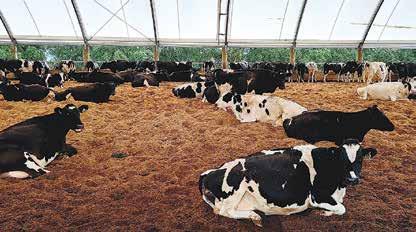
are 10 degrees cooler. This provides heat stress relief and helps cows produce well.
Calving is done in the SmartShelter barns, helping prevent loss of both cows and calves.
“Three years ago, we lost 12 to 14 cows calving outside in the cold, last year just one and none so far this season,” says Rider.
“Calf fatality is also down, as they are not born in mud.”
Rider says three years into farming with SmartShelters, he’s still learning.
“Every year, we are learning. The more we learn, the better we get and more efficient everything runs.”
Rider says farmers are under immense pressure.
Environmental issues, government-sponsored regulations, rising costs and the downturn in commodity prices are being felt behind the farmgate.
Rider believes if farmers got back to enjoying their job, “the rest will sort itself out”.
“But when you on the farm every day and playing in the mud and then
you get kicked in the guts on the TV, it has an impact on us.
“So, if you come to work and see your cows happy, your staff happy, it makes everything easier.”
JARROD RIDER’S farm production
went from 145,000 kgMS in 2021-22 to 183,000 kgMS last season
He puts this down to feeding cows in SmartShelter barns
“We can now feed the cows more when they need it,” he says
Rider believes his farm’s making about five tonnes more pasture because cows are indoors and not making a mess in wet paddocks
The cows are fed about 14kg a day –
8kg of maize and 6kg of grass
Closer to calving, they get 6kg each of grass and maize and 2kg of hay
Without the barns, when the cows were out in the paddock, they were offered 18kg of dry matter Rider says the cows were lucky to get 10kg down their throats “In here they only eat 9kg It’s warm and dry and they are not using up energy
“My feed costs are way down ”
Before the SmartShelters were constructed, the cows were dried off together to a run-off about 1km from the farm. All cows would feed on grass and baleage. Rider recalls going to
WITH 450 COWS, Jarrod Rider says he still employs a full-time staff
He says while the SmartShelter barns haven’t reduced his workforce, it’s made farming happier
“There’s no beating around in the mud, no treating down cows in mud or picking up dead calves in the mud ”
Rider recalls going to a field day where he met a farmer who had barns
“This farmer told me that people always ask about how much extra money you are making with the barns
“The biggest thing the farmer found was that the positive impact on mental health ”
Rider says waking up around 4 30am and playing around in the mud is not always fun
“Yes, we all want to make more money out of milking cows, but I think you’ve got to enjoy what you are doing
“These shelters have definitely made dairying more enjoyable in the last couple of years on our farm
the run-off on a normal winter day and getting stuck several times a day on the “real heavy soil”.
“We’d end up trying to tow everything out,” he says.
“I just got over it; told mum that we need to do something different and that if it stays like that,
dairy farming is not really for me anymore.”
He says the search began and he went to many field days looking at different shelters and sheds.
He settled on SmartShelter. They were built in the middle of Covid lockdowns.

deflation, says Woodville dairy farmer and former industry leader, Ben Allomes, in response to the present crisis facing dairy farmers.
Farmers were recently told by Fonterra that the forecast milk price midrange was dropping by $1 to $7/kgMS.

told Dairy
IN HIS own case, Ben Allomes has redesigned his business over the last five years to create a new system, far more sustainable for people, the environment and his animals
He’s involved in a trial that is putting all that to the test through Farmax, Overseer and Dairy Base He’s also in a trial using plantain, and has adapted a more flexible roster system for staff
“Looking after staff and retaining them is key to the business because in time they get to know the systems and the levers that need to be pulled to keep it on track
“They know the numbers and where they are at… so that we can survive any situation whether it’s a downturn or maximising our profit in a good year I am very proud of what they do
Another key survival tool, says Allomes, is having good data and using it
News that over the last 20 years he’s been through this sort of cycle at least five times.
He says people have to remember that it’s almost a year until the final payout day for the sector and, in the meantime, farmers should be pru-
properly He says it’s about understanding the specific soils of the farm and the various weather patterns – be it El Nino or La Nino
While we may not be 100% accurate in this regard, it will help, he adds
“We must focus on trying to develop systems which fit the environment, rather than hoping the environment will fit our systems
Allomes believes that farmers can get through the present problems without doing anything particularly radical
He says they have to be more logical and efficient and focus on the direction of travel, meeting the demands of the market
He says people need to go with change and not advocate for the status quo “Any farmer who thinks they can live with the status quo is just fooling themselves,” he says
dent in regards to farm expenses.
But he admits that farming today is much harder than it was 20 years ago because the standards are higher.
“There are certainly more hoops to jump through. We expect more
from ourselves, but I also think the expectations of our community are higher,” he says.
Allomes says farmers should be looking at ways of boosting their incomes while at the same time reducing their costs, and they need a very accurate
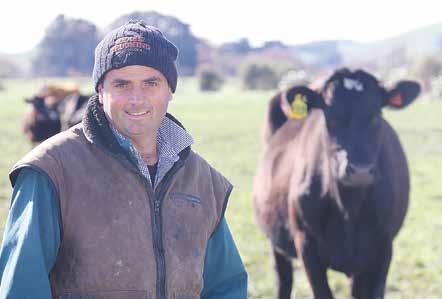
picture of where they are financially.
He says farmers can to some degree control their costs, but when it comes to income, they are price takers. Allomes points out that it is income that drives profit and when this drops below the cost of running the business, that’s when there are problems.
“Personally, we are looking at rearing extra calves this year to try to boost our income. At the same time, we are running through line by line – what do we need. But you can’t cut into the essential stuff because that just puts more risk on the business in the future,” he says.
He says downturns are cyclical and in the past the good years have made up for the bad years. But the current situation is different because farmers have run out of ‘get out of jail free cards’.
Allomes says, in the past, increasing land values and land-use changes helped to get farmers through tough times.
He says in the present tough environment with high interest rates and other costs, it is almost impossible to make any fundamental changes on farm.
“As I see it, the only way to get out of the present situation is to farm our way out of it with hard yakka,” he says.
Strict
And

from livestock, while continuing to nourish the world,” he says.
THE MAKERS of a feed additive that reduces methane emissions in livestock says the green light from the Environment Protection Authority (EPA) is an important step to register it in New Zealand.

DSM global vice president Mark van Nieuwland told Dairy News that they are excited that NZ EPA approved the use of Bovaer in the country.
“This is an important first step on the NZ registration track and eventually will support farmers with their sustainability efforts to lower emissions
According to DSM website, Bovaer is already approved for sale in over 40 countries including the EU, the US and Australia.
The NZ Government has come under criticism from farming leaders for the delay in approving Bovaer.
According to the EPA, DSM applied in 2021 to import or manufacture a substance (Bovaer) containing 10-25% of 3-nitrooxypropanol (3-NOP) – a chemical that is new to New Zealand.
DSM says 3-NOP can reduce methane emissions from ruminant ani-
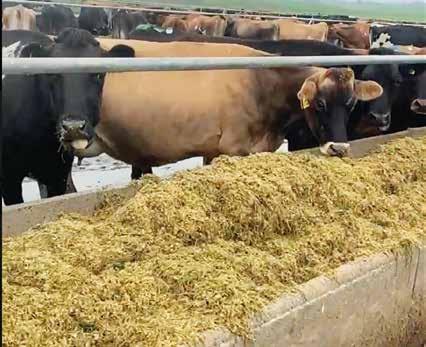
mals, including cows, sheep and goats, by 30%.
EPA’s general manager of hazardous substances
and new organisms Dr Chris Hill says substances for climate change mitigation are still new to
New Zealand and are important for meeting New Zealand’s international obligations under
climate agreements.
“This is the country’s first application for a methane inhibitor, so it was important to confirm how 3-NOP would be used and the information we required to carry out an appropriate risk assessment,” says Hill.
EPA says in concentrated forms, 3-NOP can pose significant risks to people and the EPA has put in place rules for safely using the substance.
This application does not cover lower concentrations of 3-NOP likely to be added in the final products used in agriculture or by farmers, and some formulations may require separate EPA
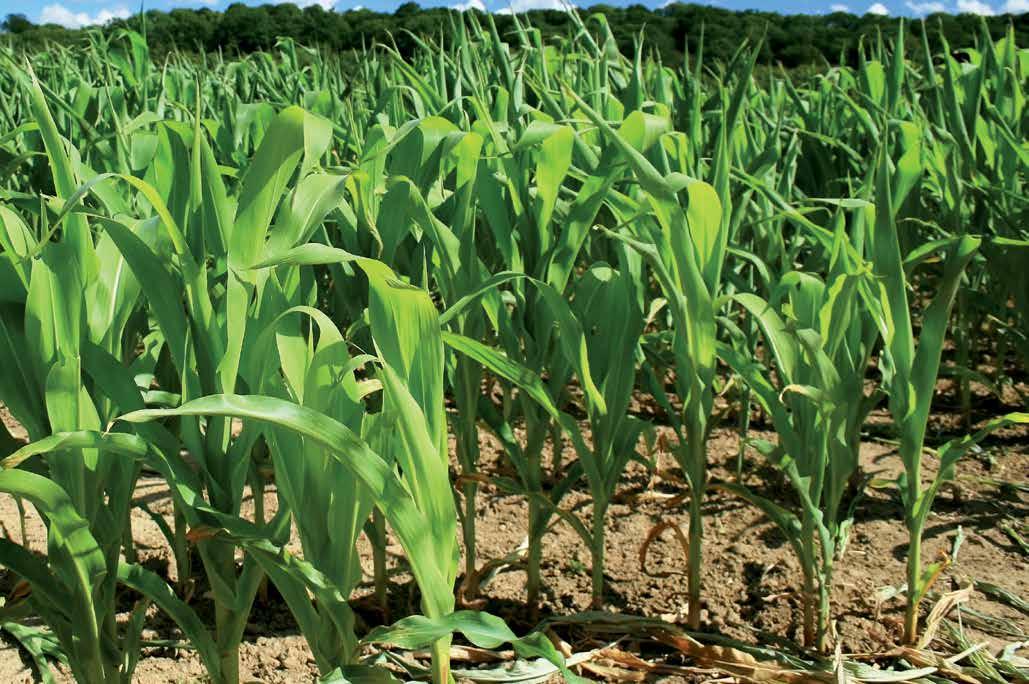
approval.
The next stage in getting Bovaer approved for sale within NZ is getting Ministry for Primary Industries approval.
MPI Deputy DirectorGeneral Vincent Arbuckle says New Zealand Food Safety has not received an application from DSM to use Bovaer in animals here under the Agricultural Compounds and Veterinary Medicines (ACVM) Act, and it’s the company’s choice when to make one.
“It’s important to note that the product is mostly used in housed feeding situations overseas, which differ from New Zealand practices,” says Arbuckle.
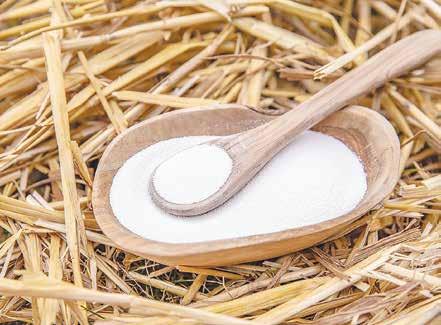
RURAL SERVICES trader
PGG Wrightson is bracing for a challenging year ahead as commodity prices continue to slide.
The listed company last week reported its second-best financial result since a major restructure in 2019.
For the financial year ending June 30, 2023, operating EBITDA of $61.2 million was down $6.0 million (9%) and net profit after tax of $17.5 million was down $6.8 million (28%).
However, revenue grew to $975.7 million and was up $23.0 million (2%) compared to the prior year.
Chief executive Stephen Guerin told Dairy News that softening sheepmeat prices had an impact on the results.
But he points out that dairy and beef prices started to come down in the second half of the financial year so the impact was limited on the latest results.
“Softening dairy prices will have more impact in this year’s results. We have flagged a more challenging year ahead.”
PGW reported a record result last year, its best since the seed business was offloaded in 2019.
Guerin says PGW is now quite a different business to what it was before the sale of the seeds business.
The drop in commod-




ity prices is also impacting PGW’s real estate business.
While properties are being listed, sale volumes are well down.

Guerin says he expects more listings in spring but very few buyers.
Apart from softening commodity prices, farm sales are also being impacted by high interest rates, uncertainty around regulations and the upcoming election.
Presenting its results last week, PGW noted that macro trading conditions for the year have been volatile with increasing input costs, inflationary pressures, and falling commodity returns for clients.
“A wet and cold spring delivered frosts which affected a number of crops.
“Two cyclones through late summer also resulted in significant crop and rural infrastructure damage in the North Island.
“In the context of these market conditions, we are heartened by the performance of the business and what has been achieved this financial year.
“We are proud of the way our team responded to the demands experienced in their regions and the extraordinary efforts of many in the way they supported each other, our clients, and their communities in need.”
The PGW board has declared a fully imputed final dividend of 10c/ share bringing the total dividend for the year to 22c/share.
PGW’s Retail & Water Group was a star performer with earnings up 3% to $54m.
Guerin says increased sales were recorded in the animal health, fencing, general merchandise, and horticultural categories.
“We transacted
increased business volumes with the same level of staff, which is something we are very proud of and testament to the commitment of our team members.
“Our clients appreciate the superior technical ability of our people who are backed by our dedicated research and development team.
“We will continue to build on this point of difference to ensure we maintain and increase
PGW’s Agency group made up of the Livestock, Wool, and Real Estate businesses saw earnings down 26% on last year
Revenue was $188 8 million, which was broadly in line with the prior year’s result, down just $0 6 million
Stephen Gurin says the livestock business achieved a solid performance in a difficult market
“Whilst there were challenges through softer sheep pricing, significant wet weather events in the North Island and declining tallies in some stock lines, there were also positive outcomes for the year

“The wet conditions contributed to greater pasture growth than normal which created unseasonal trading during the summer and autumn seasons ”
Revenues received for cattle were robust, with higher prices received compared to the prior year
This was driven by healthy pricing achieved throughout the year which was assisted by abundant feed and increases in export volumes
“Sheep pricing was below expectations throughout much of the year as demand was slow to recover in our key export markets,” says Guerin
our market share.”
Global supply chain disruptions following Covid-19 caused PGW to carry higher levels of inventory to ensure it could provide clients with the right products at the right time. Guerin notes that elevated inventory levels caused some challenges with storage and working capital management.
“As international shipping delays are easing, there is more certainty regarding deliveries.
“We have adjusted inventory levels, given that we do not need to carry the same quantities of buffer stock as was considered necessary in the prior year.”
The Rural Supplies business recorded its best performance ever,
exceeding last year’s record result, with strong sales across a range of categories.
“We continued to grow market share and delivered an outstanding result in a shrinking market,” says Guerin.

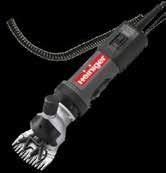

“To achieve growth on last year is an exceptional result given the climatic challenges and demonstrates the strength of our Rural Supplies business.
“Our people are passionate and motivated to go the extra mile for our hardworking clients.
“We are winning new business and seeking opportunities with key accounts, in animal health, forestry, and the ever-changing landscape of our traditional business.”

“When kiwi Bert Hansen decided to invent a pipe fitting for farmers to join alkathene poly pipe together, his main focus was to keep it simple and make it last!
50 years on, and with over 100 million fittings in the ground, Bert’s pipe fittings are still simple to use, unquestionably time tested, but most importantly trusted by kiwi farmers”
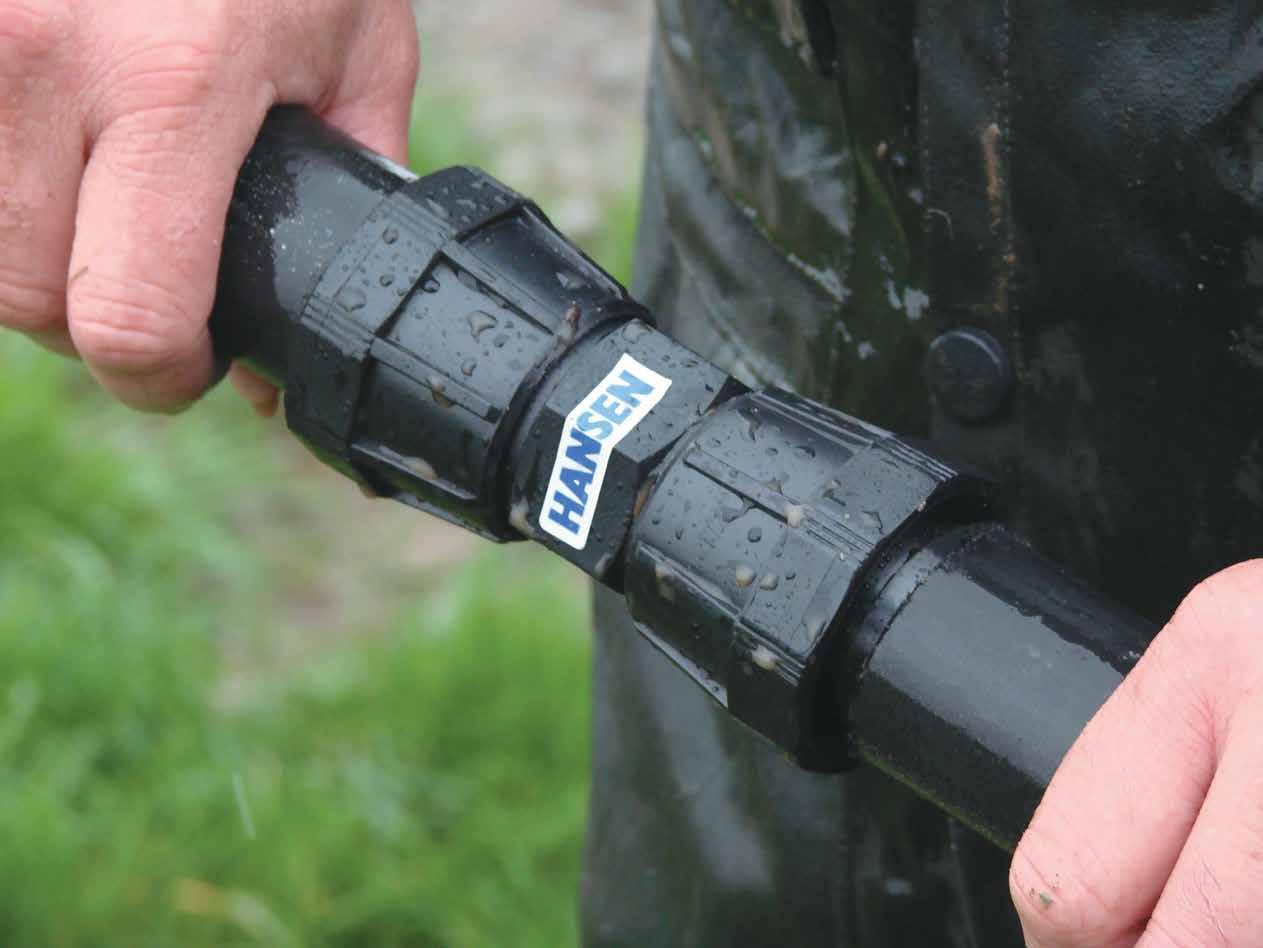
Don’t just ask for a pipe fitting, ask for a Hansen fitting!
www.hansenproducts.co.nz

Suppliers will be paid this month.
THE COUNTRY’S second largest milk processor is optimistic that global demand for dairy products will improve end of this year.
Open Country Dairy is telling farmer suppliers that demand from China will pick up from January.
It expects Chinese consumers to start buying more dairy products, despite the economy moving into full gear.
The Talley’s-owned milk processor has announced a final payout of $7.37/kgMS for milk supplied between February and May this year.
Open Country pays its milk suppliers in full four times during the season and chief executive Mark de Lautour describes the May payment period as a good result.
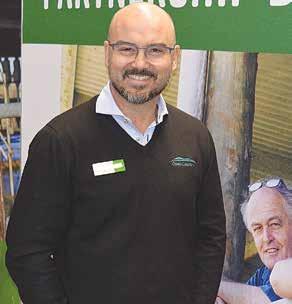
“While at the lower end of our forecast range, it is a good result considering the softening market conditions the industry has been facing,” he says.
De Latour notes that the last Global Dairy Trade (GDT) event was a shocker.
The overall price index dropped 4.3% with flagship whole milk powder prices slumping by 8%.
Open Country do
not sell on GDT. However, most contracts are indexed in some way to the GDT results, noted de Lautour.
“The addition of volume onto GDT during a time when few bidders are active is creating a supply-demand imbalance on the platform,” he says.
The gloomy GDT result was followed by Fonterra reducing its milk forecast price range midpoint by $1/kgMS.
De Lautour believes this has sent a worrying signal that low market pricing may be with us for a bit longer.
But he says Open Country still sees global demand improving, par-
powder from China.
ticularly from China, from January 2024.
“This is consistent with what we have been communicating at our supplier meetings.
price than Fonterra’s $7 mid-point for the rest of the year. For milk supplied between June and September, Open Country is forecasting a milk price range between $7.25 to $7.55. For milk supplied in October and November it has a forecast range of $7.30 to $7.70.
De Lautour says they don’t believe that a significant turnaround in the Chinese economy is required to improve their purchasing behaviour.
seeing different perspectives from milk processors for the coming season and their respective views on milk price.


“While we can never guarantee our predictions are right, we continue to present what we see in front of us, operate very conservatively, efficiently and do not have excess unsold inventory.”
FARMERS ARE being told to expect tight times ahead as the projected milk price was revised to a new midpoint range of $7 following the global dairy trade (GDT) dairy auction earlier this month.
Fonterra chief executive Miles Hurrell said that the revised price range reflected ongoing reduced import demand for whole milk
“When we announced our opening 2023/24 season forecast in May, we noted it reflected an expectation that China’s import demand for whole-milk powder would lift over the medium-term.”
However, that was not the case, with GDT whole milk powder prices dropping 12%, with China’s share tracking below average.
Additionally, Rabobank’s August commodity outlook tells that July
“However, the upturn will now be from a lower base following the recent GDT reduction.”
Open Country is still forecasting a higher milk
saw most prices (cheese, butter etc.) below 5-year averages, with higher on farm costs and negative weather events having even more impact.
Rabobank senior agricultural analyst Emma Higgins said that compared to the same period in 2022, the farmgate forecast had weakened 24%, with all input costs raised 13%, with the biggest needle mover being interest rates at +50%.
“Markets are weak and challenging now. It will be painful for those
However, he admits that the economic performance from China remains well below expectation, and some serious stimulus is required. “We are now
going through this period of adjustment.”
Otaio dairy farmer Ewen ‘Horrie’ Holliver, who runs 1000 dairy cattle across 325 hectares, says that increasing costs have meant that margins are tight.
“We’ve got a bit of fat in the system from last year, but if it’s still low next year there’ll be a bit of blood on the ground. Just with the way wages are at the moment we’re probably at half the staff at the moment,
De Lautour says this season will be “extremely tough” and urges farmers to manage their running costs and capital spend diligently.
“Cash is king and I trust our payment model will provide you with a working capital/overdraft advantage during these tougher times.”
we’ll just have to keep paying their wages and take it off somewhere else.
“Everyone’s a bit worried, even the people I talk to in town. They’re thinking ‘if farmers aren’t spending there’s not going to be any money coming in, is there?’”
Hurrell and Higgins both said that the low GDT reflected a current surplus of fresh milk into China, resulting in elevated local production of whole milk powder and thus less need to import whole milk powder.
BVD (Bovine Viral Diarrhoea) is estimated to cost dairy farmers around $70,000 a year for the average sized herd. It’s often called ‘the hidden disease’ - affecting reproduction rates, growth rates and lowering milk production and general herd health. Some farmers simply don’t know their herd is infected until it’s too late.
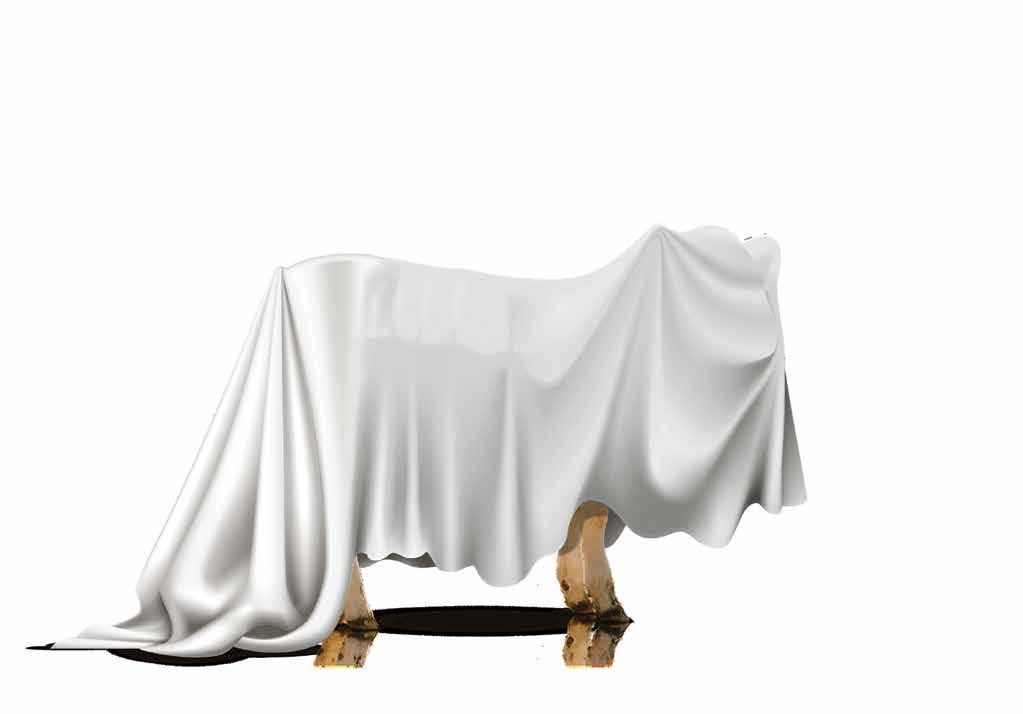
The good news is LIC’s BVD Status Pack can conveniently and cost-effectively determine your herds’ BVD status, through three bulk milk tests and one test on individual herd test milk samples. This way, you can monitor your herd throughout the season, as well as record a lifetime BVD status against individual animals, giving you the chance to swiftly remove any infected animals from the herdsaving you from becoming another statistic.
Talk to your Agri Manager today and order a BVD Status Pack before the start of mating.
There's always room for improvement
What’s your replacement hiding? A BVD status test can reveal all.
would get worse.
THE ‘LONGEVITY of uncertainty’ is what’s driving the lowest level of farmer confidence in more than a decade, says farming leader Ben Allomes.
He says this started with Covid and has just got worse.
Allomes was commenting on a survey by Federated Farmers –taken before Fonterra dropped its forecast milk price mid-point to $7/ kgMS – that showed 81% of respondents believe the current economic situation to be bad and only 1% to be good.
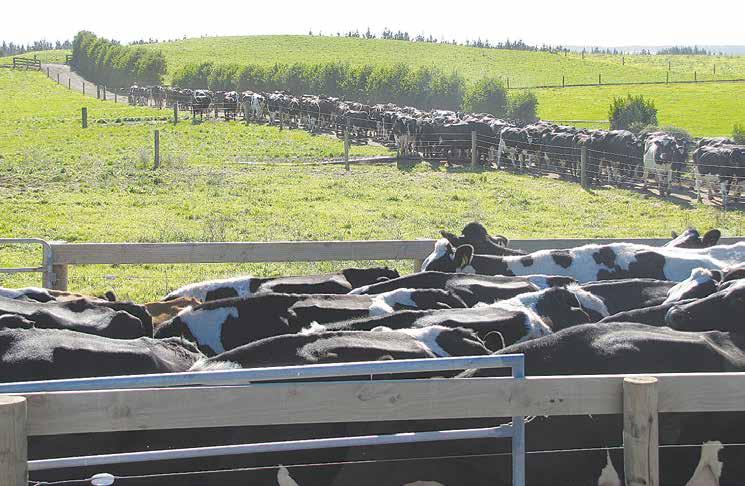
Only 3% of those surveyed believed the situation would improve in the next 12 months, while 73% believed it
The results of the survey reveal that while 27% of respondents reported making a profit, 27% said they were making a loss.
Another worrying statistic from the survey is that 22% of respondents expect to reduce production in the next year and only 14.5% expect to increase their production.
The survey covered 1000 sheep, beef, dairy and arable farmers nationwide.
Allomes believes it all started for him when Covid struck.
“I remember sitting on a hill in the middle of the first lockdown and saying, are they going to shut down the dairy factories or the meat works and am I going to have shoot my cull cows and bury
them on farm, but I can’t get a digger,” he told
“That was the level of risk we were facing and to top it off we were in a drought,” he says.
Since 1993

Oct 22, 2023 6 Days
Stay in sunny Nelson & Blenheim. Enjoy a Queen Charlotte Sound cruise, lunch & wine taste at Seifried winery, a Greenshell Mussel Cruise. Visit Motueka, Kaiteriteri, Abel Tasman National Park and Pupu Springs. Train to Omaka Aviation Centre.

Forgotten Highway & Taranaki
Nov 7, 2023 + Feb 13, 2024 6 Days
Visit Hobbiton, travel 40km by Rail Cart into the Forgotten World - 10 hand dug tunnels and over 25 bridges. New Plymouth sightseeing tour, cruise aboard Paddle Steamer Waimarie, then Northern Explorer train back to Auckland.

Allomes says since then the primary sector has farmed its way through supply chain issues, major weather events, inflation and high interest rates, all of which create uncertainty. He says there are few options left for farmers to deal with the situation they now face.
“There are no more levers for farmers to pull to deal with this,” he says.
Allomes believes there is something of a hiatus in the rural sector with the election a matter of weeks away. He says, deep down, farmers
FEDERATED FARMERS president and dairy farmer, Wayne Langford, says his organisation has real concerns about farmer wellbeing and what this might mean for farming families, rural communities and the wider NZ economy
He says farmers are dealing with a lot now with high interest rates, huge inflation, and a steep decline in both meat and milk prices they receive for their products Langford says farmers are
believe there will be change but what that change might look like is another thing. The hope is the government after the election will make life easier for farmers or at least give more certainty.
“But there is still that uncertainty over whether we trust any of them
facing an unprecedented level of regulatory change that is heaping on costs, undermining profitability, and creating huge uncertainty for farmers
“Unfortunately, all these challenges have arrived at the same time, which just compounds the pressure farmers are feeling – it’s just not sustainable,” he says Langford says the deterioration in farmer profit has occurred at frightening speed
anymore,” he says.
One farmer recently joked that Labour ignores farmers because they don’t vote for them and National ignores them because they know they will vote for them.
Allomes says people talk about the problem of “regulations”, but few
He says this time last year, just 3 5% of farmers reported making a loss That figure jumped to 27% in this survey, which was conducted prior to Fonterra announcing its payout downgrade
“This should serve as a wake-up call for all political parties, banks, and processors that something needs to urgently change There needs to be a real focus on reducing the costs and uncertainty farmers are facing,” he says
are specific about which regulation is the problem.
He says he doesn’t spend a lot of time dealing with regulations as such, but he must record data and the way of doing this could be improved.
“Interestingly, the younger farmers coming
through don’t see regulation as regulation –they just see it as part of their job.
“It’s about recording data which, is part of their job.
“They are curious and that’s how they operate and don’t see it as an onerous task,” he says.
THREE CANDIDATES are vying for a South Island seat on the board of fertiliser co-operative Ravensdown.
Bonded for Your Protection
Door to Door Service in Auckland Metro Area
Simon Davies, Jane Montgomery and Aaron Stark filed their nominations last week. An election will be held under the first past the post electoral system, by postal and internet
Voter packs will be posted out to South Island Area shareholders this Friday. Voting ends on September 22.
For the North Island seat,
only one nomination was filed: sitting director Mike Davey will serve another term.
Meanwhile Ravensdown has appointed Tony Carter to its board. Ravensdown chair Bruce Wills says Carter is one of New Zealand’s most experienced governors, known for his strategic leadership.
“With his extensive governance experience and commercial acumen across a broad range of sectors, Tony brings deep wisdom and foresight that will complement the existing
collective skillset of the Ravensdown board.
“Importantly, he also has a real passion and understanding of co-operatives, having led Foodstuffs as chief executive and managing director for 10 years before embarking on his governance career.”
Carter says it was the cooperative element that initially drew him to the role, but he’s also looking forward to his first directorship in a primary sector organisation.
“Agriculture is such an inte-
gral part of New Zealand, from both an economic and cultural perspective.
“I’m excited to be joining the Ravensdown board and having an opportunity to contribute to positive outcomes for New Zealand farmers and growers.”
Carter is currently chairman of New Zealand-owned technology business Datacom Group, My Food Bag, TR Group, The Interiors Group and the Skin Institute.

DUTCH CO-OP Arla is now paying a monthly incentive to its farmer shareholders for sustainability efforts.
Arla says it intends to pay farmer suppliers over $4 billion until 2030 in incentive payments to reduce scope 3 emissions.

Arla’s scope 3 target is to reduce carbon dioxide emission by 30% by the end of 2030.
Fonterra is talking to its farmer shareholders about setting scope 3 targets.
Arla says its farmers suppliers are rewarded for climate activities and other sustainability efforts being made on their farms, using a datadriven and science-based points system.
It says farmers have implemented more activities than first anticipated and, based on the current level, Arla stands to pay out $4b until the end of 2030 for farmers’ sustainability activities. The cooperative has, however, earmarked a bigger amount as it expects its farmer owners to raise
the bar significantly higher.
Last year, Arla introduced its new groundbreaking Sustainability Incentive model which rewards farmers for the climate and environmentenhancing initiatives they undertake.
It says farmers who do the most for climate and environment will receive the highest price for their milk. And consequently, the consumers are guaranteed that a part of the
price they pay for Arla’s products helps reward and motivate a faster transition to more sustainable dairy farming.
Arla has earmarked up to $900,000 each year to reward and motivate farmers, of which almost $600,000 is now activated.
Arla chief executive Peder Tuborgh says he has been looking forward to this day.
“The Sustainability Incentive is a large step



ARLA FOODS chair Jan Toft Nørgaard says its owners are working determinedly to reduce emissions on their farm
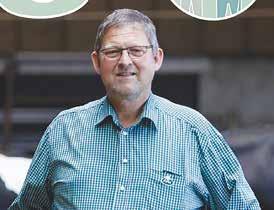
“There is a great commitment in our cooperative to show our consumers, our industry and society in general that we as Arla farmers are able to produce milk with an increasingly smaller footprint on climate and nature
“It is a significant effort for the individual farmer; however, many are well on their way and together we can motivate each other - through a financial incentive using our new points-based model
“I am excited to watch the level going forward, because with this large engagement we will be able to move really far in a short period of time
towards linking economy and climate and nature improvements on farm.
“Arla’s unique point system makes it possible for us to reward our owners and thus contribute to their large investments in sustainability.
“At the same time, we strengthen the farmers’ motivation to implement the initiatives necessary for our cooperative to reach its ambitious climate goals for 2030,” says Tuborgh.
In 2022 alone, Arla farmers across seven countries reduced their carbon dioxide emissions from their milk by more than 2%.
Data from Arla’s Climate Check on the farms shows this. Among other things, this has happened because the farmers have produced and used feed more efficiently, used less fertiliser, improved their manure storage, reduced energy consumption and shifted to more renew-

able electricity.
When Arla introduced the Sustainability Incentive model, the dairy company expected farmers to achieve an average of 39 points out of a possible 80 in the new point system. However, the first inventory shows that the average farmer has achieved 48 points based on the initiatives registered by the end of June 2023.
The 48 points mean that across seven coun-
tries Arla pays out an average of 3c/kgMS to its farmer owners through the Sustainability Incentive. On top of this is another 1.8c/kgMS for submitting the Climate Check data that is required in order to take advantage of the Sustainability Incentive. For an average Arla farm with annual milk production of 1.6 million kgMS, the two amounts in total equal close to $73,000 a year.
DAIRY FARMERS are doing it tough and the latest Global Dairy Trade auction results point to tougher times ahead
Fonterra, as one of the biggest corporates in the country, has been doing its bit for the community – like contributing to Kickstart Breakfast alongside the Government
Given the financial strife facing Fonterra shareholders, should the co-op pull out of such initiatives until dairy prices improve?
This will keep a bit more money in farmers’ pockets And, isn’t funding social welfare initiatives the job of the government?
IT’S INTERESTING to note that Dutch co-operative Arla Foods is paying its farmers billions for reducing their scope three emissions (that’s greenhouse gas emissions generated behind the farmgate)
Fonterra farmers are waiting with bated breath on the co-op’s plans to tackle scope three emissions in New Zealand
With milk prices falling and farmers under financial pressure, Fonterra farmers are in no mood for extra costs or new requirements
That’s the dilemma facing the Fonterra board and management, and that may explain the delay in the co-operative coming out publicly with its scope three targets for farmer shareholders
IN THE aftermath of a mass shooting earlier this year on the campus of Michigan State University in the US, the university’s herd of cows has provided comfort to students
The Dairyherd reports that the MSU Dairy opened its doors to students, inviting them “to de-stress by petting MSU cows and calves”
The first two events had about 800 people pass through its two farms – horse and dairy MSU dairy manager Jim Good said students spent an hour brushing cows, which they said made them more at peace
LAST WEEK’S Global Dairy Trade (GDT) auction result doesn’t make good reading.
Prices of major dairy commodities have fallen by a quarter over the past year. Looking over a longer period, whole milk powder (WMP) prices are now at a seven-year low.
Just a few months ago, analysts were predicting a farmgate milk price over $8.50/ kgMS.
A string of GDT price slumps has snuffed out confidence. Analysts are now advising farmers to budget on the lower range of Fonterra’s forecast range of $6.25 to $7.75/kgMS.
Fonterra this month slashed its forecast range mid-point by $1/kgMS.
Before Fonterra’s decision and the dramatic price falls on GDT, DairyNZ’s 202324 forecast for net cash income was $8.78kg/ MS.
THE PLANT-BASED milk industry is booming, and new milks are appearing all over the place But few of these alternatives compare to cow’s milk in terms of nutrition, according to data presented on July 24 at the American Society for Nutrition Conference in Boston The data has not yet been published
Scientists analysed the nutrition labels for 237 plant-based milk products from 23 different manufacturers Only 28 of those beverages were comparable or better than dairy milk when it came to vitamin D, calcium and protein
Cow’s milk is more nutrient dense than most plant-based alternatives
Publisher: Brian Hight Ph 09-307 0399
General Manager: Adam Fricker Ph 021-842 226
Head Office: Lower Ground Floor, 29 Northcroft St, Takapuna, Auckland 0622 Phone 09-307 0399.
Editor: Sudesh Kissun Ph 021-963 177
Machinery Editor: Mark Daniel Ph 021-906 723 markd@ruralnews.co.nz
Reporters: Peter Burke Ph 021-224 2184 peterb@ruralnews.co.nz
It’s estimated total expenses were on average around $8.72 kg/MS for the same season.
With analysts now eying a payout under $7/kgMS, there is a risk of significant cash loss for many dairy farmers.
DairyNZ rightly points out that this isn’t the first time there has been large milk price forecast decreases.
“And we know from experience that farmers rein in their expenditure, to minimise cash losses.”
Dairy sector debt has also decreased by $5.4 billion, from $41.7 billion in 2018 to $36.3 billion in 2023, putting farmers in a better financial position.
There are a few key things that farmers can consider, to help manage their farm businesses during the current economic climate.
With a reduced milk price forecast, now is the time to look line-by-line at where spending can be decreased and pause non-essential capital projects. However, changes need to be well thought through and not have longterm effects on profit, or the wellbeing of your people or animals.
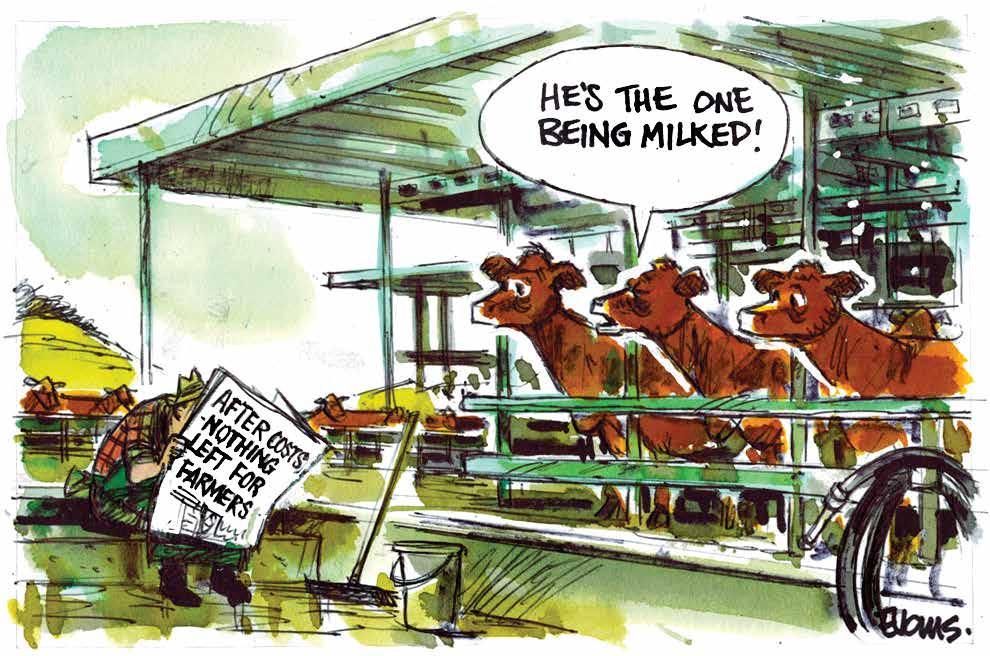
Dairy farmers are known for their resilience, but that doesn’t make coping during challenging times any easier.
AUCKLAND SALES REPRESENTATIVE: Stephen Pollard Ph 021-963 166 stephenp@ruralnews.co.nz
WAIKATO SALES REPRESENTATIVE: Lisa Wise Ph 027-369 9218 lisaw@ruralnews.co.nz
WELLINGTON SALES REPRESENTATIVE: Ron Mackay Ph 021-453 914 ronm@ruralnews.co.nz
SOUTH ISLAND SALES REPRESENTATIVE: Kaye Sutherland Ph 021-221 1994 kayes@ruralnews.co.nz
IN AN ever-changing world, dairy farmers face numerous challenges that hinder their ability to maintain profitability and sustainability.
As the executive chairman of Waikato Milking Systems, I have had the opportunity to interact with farmers from around the globe, and a common thread weaves through their concerns.
One of the primary issues facing farmers is the scarcity of available labour.
The younger generation shows a reluctance to live in rural areas and take on diverse tasks on the farm. Instead, there is a growing trend towards specialisation, leading to a shortage of skilled workers.

Moreover, the cost of labour has risen significantly, surpassing preCovid levels. This surge in labour costs, coupled with supply constraints, has driven inflation, with the unemployment rate predicted by the ANZ to rise rapidly in the next 12 months, much like during the Global Financial Crisis.
The agriculture industry has been further burdened by increased costs of feed, fertilisers and energy.
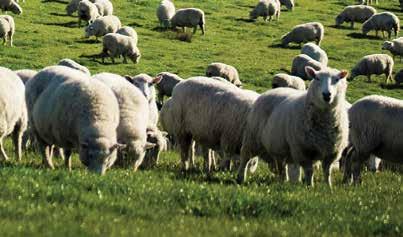
During the pandemic, farmers and retailers stockpiled supplies as they faced challenges in procurement. However, the scenario has changed, and just-in-time ordering has become more prevalent.
Consequently, suppliers are now facing pressure to reduce prices to secure sales, despite lower volumes. Warehouses are full, working capital under pressure.
Additionally, the cost of capital has risen significantly, limiting cash flow, and hampering the ability to invest in labour-saving or productivity-enhancing technologies.
Compounding these challenges, milk prices have plummeted, sometimes falling below the cost of production. Weak global demand for dairy products has outweighed the sluggish growth in global supply. The vola-
tility of the Global Dairy Trade (GDT) adds further uncertainty, making it challenging for farmers to predict their future income, let alone the political and environmental challenges facing the industry.
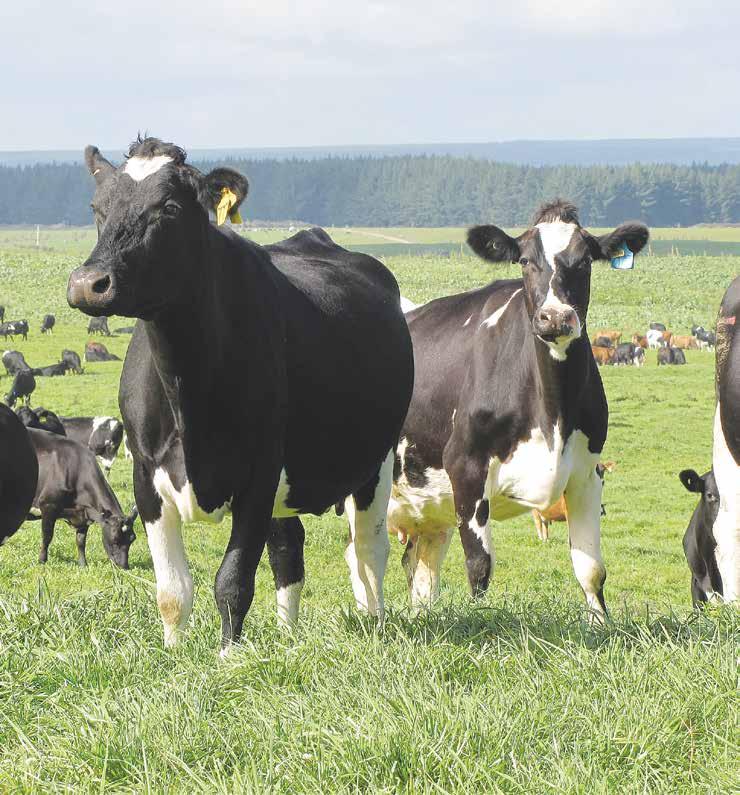

Amidst these immediate challenges, farmers worldwide have been turning to technology as a solution.
In Europe, where smaller family farms are prevalent, milking robots have become almost commonplace. On larger farms, rotaries are preferred. Upgrades and replacements of parlours have been on the rise, along with the adoption of automated cluster removers, auto teat spraying equipment, auto feeding, sorting, and heat detection systems.
However, there is still untapped potential in milk yield recording, which can serve as a valuable data source for dayto-day herd management decisions.
Despite the current difficulties, farmers who adopt a clear investment strategy in technology and leverage its benefits will be better positioned to thrive when milk prices eventually strengthen. To make these technologies accessible, many technology providers are offering payment options over time, often less than three years, enabling farmers to realise a return on investment within this timeframe.
Over the past two decades, technology has progressed rapidly, but the last five years have seen a remarkable acceleration in advancements, akin to the exponential growth witnessed across industries.
Data-driven insights and the integration of smart AI technologies are revolutionizing the agricultural landscape and are set to bolster productivity gains significantly. This presents a promising outlook for farmers and their cows alike.
Precision farming technologies are set to be the cornerstone of driving productivity in dairy farming. These innovations empower farmers with data-driven insights and real-time informa-
tion, enabling them to optimize their operations and make informed decisions.
Challenges faced by dairy farmers worldwide necessitate innovative solutions to drive productivity and sustainability. New Zealand’s above average herd size and scale puts it in a unique
position globally. There is much to be proud of here in NZ, however celebrating our progress has been clouded with political and environmental posturing for too long. While the pressing issue of global warming demands urgent attention, it is undeniable that the world also grapples with excessive waste
and inefficient resource use.
It is for these very reasons that embracing precision farming techniques will propel us towards a brighter future, fostering shareholder value, and in tandem, forging a path towards a more sustainable and ecologically responsible world.
ANGUS, HEREFORD and Simmental bull breeders are being encouraged to nominate sires for use in an innovative beef programme.
The Informing New Zealand Beef (INZB) programme is seeking bulls for the next mating season on Pamū’s Kepler farm near Te Anau and Lochinver Station near Taupo.
Dr Jason Archer, genetics specialist at Beef+Lamb New Zealand and INZB science lead, says the Beef Progeny Test (BPT) allows breeds to be compared as well as bulls.
“It enables B+LNZ Genetics to evaluate good bulls on the same level
playing field, while demonstrating the differences and similarities between the breeds as well as the benefits of hybrid vigour.
“The BPT plays a key role in strengthening New Zealand’s beef industry for the benefit of all farmers.”
Breeders of bulls selected for use in the BPT will be provided with detailed information about the performance of their bull’s progeny, including processing data (in the case of steers).
The INZB BPT builds on data gathered from the previous Beef Progeny Test, with mating carried out between 20142020 on several largescale commercial cattle
operations throughout the country, says Archer.
Lochinver Station joined the programme as a Progeny Test host farm last year, and in Janu-
ary this year, around 600 Angus cows were artificially inseminated using Angus, Hereford and Simmental bulls.
For Lochinver Station,
becoming a Progeny Test site for the INZB programme provides benefits for the farm business and the wider industry.
“We’re a progressive farm with a strong focus on beef production and so we are pleased and proud to be a part of something that will help build a stronger beef industry in New Zea-
land,” says Steve Smith, business manager at the 9500ha sheep and cattle farm, which is on the Rangitaiki Plains near Taupo.

“We get provided with data on the growth, fertility and carcase traits.
“That will help us on farm to identify how we could introduce different breeds of bulls and create
hybrid vigour to produce more efficient cattle.”

Lochinver’s inclusion in the programme allowed Simmental genetics to be included in the BPT for the first time. While Simmentals are typically used as a terminal sire in this country, Archer says the breed is commonly used in maternal crossbred cows in other parts of the world.
He says there are maternal lines of Simmental available in this country which are suitable for use in a maternal crossbreeding programme.
On Kepler farm, Hereford and Angus cows are run side-by-side with crosses undertaken both ways.
Bull owners can nominate their bulls through the online nomination form.
Nominations close on August 25.
ANIMAL FEED nutrition and manufacturing company Nutrinza has been awarded FeedSafeNZ accreditation for its custom blending manufacturing stores in Stratford and Marsden Point, adding to an existing accreditation of its Mount Maunganui-based store.
It’s an accomplishment that showcases the company’s outstanding dedication to feed safety practices.
FeedSafeNZ is a programme designed to enhance the quality assurance of New Zealand-produced stockfeed, and to provide increased risk mitigation in animal feed manufacturing, blending and use.
Accreditation verifies that feed and food products are produced to highquality standards and that the business complies with relevant legislation and regulations.
Nutrinza managing director Warren Morritt says that to achieve accreditation, both stores underwent a rigorous inspection by independent auditors.
AsureQuality Limited who assessed feed manufacturing processes, record-
keeping, staff training, quality assurance procedures and traceability.
“The auditors found both stores exceeded the standards required for the FeedSafeNZ Accreditation, and as a result, we’re proud to have been awarded the certification,” he says.
Only FeedSafeNZ accredited manufacturers may use the FeedSafeNZ logo on their packaging and websites. The FeedSafeNZ mark assures farmers that the animal feeds they buy is made to the highest possible standard.

“Now all three of our stores at Mount Maunganui, Stratford and Marsden Point are accredited.
“This certification demonstrates our commitment to feed safety and provides assurance to our customers that they can trust our products,” Morritt says.
FeedSafeNZ audits are carried out annually by AsureQuality.
Nutrinza is part of the Intelact group of companies driving sustainable food production in New Zealand and across the globe.

ANY FARM system change should be farm by farm and not a wholesale change.
That’s the view of Dr Nick Sneddon, a senior lecturer in animal breeding at Massey University. He’s also worked as a business analyst at Fonterra.

Making any wholesale changes to the dairy farming system in NZ could end up having an overall detrimental effect, but Sneddon believes that individual farmers should closely examine their balance sheets and assess what cost cutting makes sense for them.
“For example, cutting out nitrogen might be viable on one farm but not on another, while reducing supplementary feed may work for one and not another,” he says.
Sneddon says the industry is going through another cycle of depressed prices for milk but he points out there have also been good times.
He says during the good times, the increased on-farm costs effectively get masked by the higher prices, but when incomes fall, the costs
are exposed. He says the increased costs of bigticket items such as fertiliser and supplements have added another 60c/ kgMS to farmers’ costs. He adds that interest rates are also adding to the woes of farmers.
Sneddon says when it comes to cost cutting there are various tradeoffs. Once-a-day (OAD) milking is an option for some but again not for others.
“You can drop feed out but you can only do that if you reduce the number of animals you have to feed. You can’t remove nitrogen and expect to grow more grass.
“So, it’s possible looking at the cows at the bottom of herd and saying, who’s ready to go – namely those with low genetic merit or low production or repeat mastitis cows – and that can reduce that feed bill,” he says.

But Sneddon says

THE AGRICULTURAL Industries
care should be taken to keep young cows of high genetic merit that may not be the highest producers in the herd now but will be in the future.

“The ones to target are the older cows who are producing less,” he says.
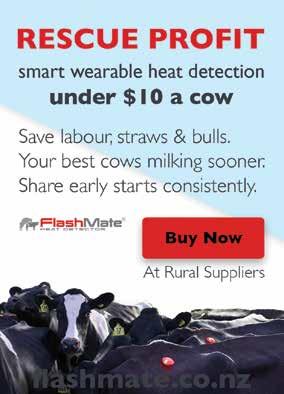
Sneddon says the use of data is important to make the correct decisions. He says often farmers generate useful data but don’t realise it is available to them. He says they should not only look at recently generated information but also what milk production was three years ago at the same time of the year.
Confederation (AIC), the UK’s agri-supply trade association representing UK fertiliser and agronomy companies, is raising concerns that farmers, growers and buying co-operatives must brace themselves for law changes that will require them to provide photo ID when purchasing ammonium nitrate (AN) fertilisers.
Coming at a time when the autumn campaign for getting next year’s crops is in full swing, thousands of farming customers could be barred from placing orders for AN from the October 1 2023, unless they can first submit photo ID to the retailer.
The move has come about because The Home Office has amended the Control of Poisons and Explosives Precursors Regulations 2023 to introduce new substances to the lists of regulated
explosives precursors and poisons. This means that any AN product with a nitrogen content of 16% or more, including compounds, blends and mixtures such as NPK fertiliser containing ammonium nitrate above the nitrogen content threshold, falls into the new regulations.
Readers of a certain age will no doubt remember that ammonium nitrate mixed with other freely available ingredients was the ‘go to’ for removing old tree stumps out on the farm, but more likely remember its effects during the troubles in Northern Ireland.
The new rules mean businesses supplying regulated explosives precursors to professional users and other businesses will need to take additional steps to verify the legitimacy of the individual or business.


The photo ID provided can be for anyone working for the farm business who is authorised to make the purchase.
A spokesperson for the AIC
said, “While we will always support efforts to further minimise the public safety risks of fertiliser falling into the wrong hands, the Government has failed to understand how ammonium nitrate products are bought and sold within agriculture.
“Typically, fertiliser orders are often made by farmers and growers over the phone, not over a shop counter, making it impractical to meet the new requirement to show a passport, driving licence or other photo ID.
“We are concerned that unless farming customers can show distributors their photo ID, they legally will not be able to place an order and we may see a situation where there is a de facto ban on AN fertiliser sale from October.
“The AIC will be working with farming unions to ensure that the practicalities of this new legislation are better understood by farmers across the UK, making sure that they are well prepared for the changes.”
PERRIN AG says it is helping farmers get on top of regulation, making compliance easier and less costly by empowering them with the skills to assess their own farm compliance requirements at home.
The agribusiness advisors say its Empowering Farmer Compliance Workshops will help farmers identify what they can do themselves, where they might need additional support and where to go for help.
Thanks to funding from the Ministry for Primary Industry’s (MPI) Accelerator Fund, Perrin Ag is offering the workshops at a subsidised cost of just $150+gst per farm business.

“Many farmers are feeling overwhelmed with the increasing compliance requirements for their business,” says Perrin Ag
consultant Rachel Durie.
“With margins squeezed, budgets are tight, so the more farmers can do themselves, the less costly it is for them.
“These workshops are designed to help farmers who are unsure about where to start but want to undertake some of the requirements themselves and put a plan in place to make it happen.
“Knowing where their gaps are and what support they need will also help farmers extract
Water
better value from any consultants they go to for help.”
These workshops are designed to give farmers the tools they need to tackle a range of issues: environmental and health & safety compliance to service tenancies, animal welfare and biosecurity.
The sessions will be delivered to small groups of no more than 16 farm businesses. Content will be tailored to farm type and location to take local regional council rules into consideration.
Designed and led by Perrin Ag, the first workshops will be held in Waikato, Bay of Plenty, Northland and Manawatu over the coming months.
Content has been developed in partnership with the regional councils and in collaboration with key industry groups and experts in certain areas of compliance.
The Perrin Ag team will tailor each workshop to the needs of the farmers participating. They will prioritise areas of compliance where there is the most interest, address concerns and answer questions along the way.
“The workshops and take-home resources provided will help farmers
prioritise their business’ immediate compliance needs and identify where they need to invest first,” says Durie.
“It’s about empowering farmers to take control and address issues themselves or help them understand where they can go for help rather than spending endless hours researching online.
“We want them to feel confident rather than overwhelmed and shift compliance from being a pain point and a barrier to being an integral part of a successful farm business.
“The workshops are a stress-free, no hassle solution that is very cost effective. We’re grateful to have backing from MPI to do this work and give farmers more clarity and direction for the work that needs to be done.
“Our first workshops will also help us refine our model as we look to scale the initiative and reach even more farmers across the country.”
The first workshop is scheduled for September 2023, and spaces are limited.
Find out more and register your interest by visiting the Perrin Ag website.

FEATURE: 5 SEPTEMBER
BOOKING DEADLINE: 23 AUGUST
MATERIAL REQUIRED: 29 AUGUST
To be in this special report contact your advertising representative now to promote your products and/or service to all NZ dairy farmers and sharemilkers.
“It’s about empowering farmers to take control and address issues themselves or help them understand where they can go for help rather than spending endless hours researching online.”Perrin Ag’s Carla Muller and Rachel Durie who are leading the project.
and effluent can be both a valuable resource and a headache, depending on how they are managed. This special report will examine the latest technology available for efficient water and effluent management.

WHILE THE recent payout announcement is not the news dairy farmers were hoping for, it’s an opportunity to review on farm performance with a specific focus on protecting your farm’s profitability.
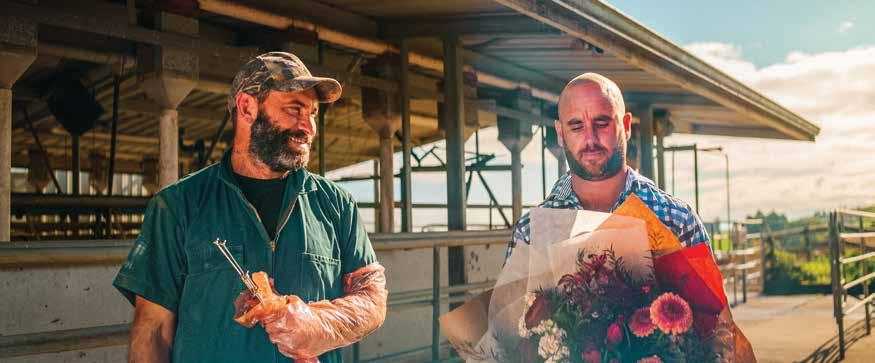
Arguably, the greatest immediate and mediumterm opportunity will be to optimise peak production, while also honing herd fertility this coming mating.
Being guided by industry best practice targets and adopting a considered nutritional approach for your entire herd will pay dividends throughout the coming lactation season.
It’s the time of the year when dairy farmers’ focus shifts towards achieving a strong in-calf rate. After all, a farm’s profitability is inherently linked to the reproductive performance of its herd more than any other driver.
As a result, cows that don’t readily get in-calf, delays calving, reduces days-in-milk and high empty rates are ultimately a cost to the business, which is often under-emphasised.
Industry in-calf targets recommend 78% of cows should be in-calf within the first six weeks
of mating. The current industry average for a six week in-calf rate is 66.4%, with an average empty rate of 17.6%.
Using DairyNZ’s Economics of Reproductive Performance Tool, we can calculate the financial impact of not closing this gap, which for a 450-milking cow herd is around $50,000 this year. To close this gap, it’s important to be mindful of the underlying fundamentals.
Balancing energy
The cow’s metabolism is operating at extremes.
She has just given birth, started lactating and her rumen is adapting and expanding to an increased feed intake. To
meet the demands of lactation, she is using her body reserves to get the nutrients she needs and is in what is known as a negative energy balance.
She needs to shift from a negative energy balance into a positive energy balance. This is when nutrients to support lactation are being provided through what she is eating rather than her body reserves. It is critical this happens prior to mating to improve reproductive success rate.
Nailing feed quantity & quality
To minimise delayed calving and empties, it’s crucial to adopt a nutri-
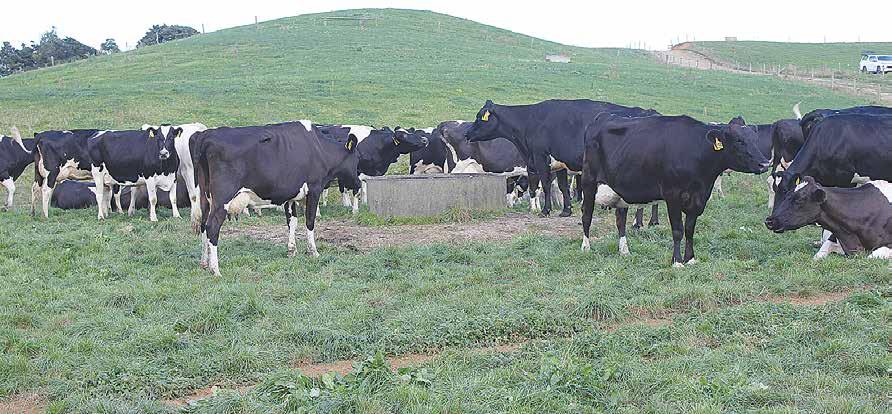
tional approach that ensures feed consistency of both quality and quantity.
Cows should be on a rising plane of nutrition with a high-quality feed allowance, which allows them to achieve better body condition and reproductive function during mating. Ensuring feed availability and supplementing nutritional deficiency gaps, even during hostile weather, is critical to timely cycling. Use a high energy, high starch feed
To address any pasture shortages and energy deficits, feed a high-energy feed. Use a high starch pelleted feed contain-
ing a range of starches with different breakdown rates. This will make sure the starch is available to the cow for longer and creates a more stable and efficient environment in her rumen.
Starch contributes energy but also feeds the rumen microbes, which enhances rumen function and improves feed utilisation, which in turn feeds the cow.
Pellets containing bypass fats will also provide targeted energy and help cows get in calf and maintain pregnancy.
Don’t forget trace minerals
Trace minerals help support mating and boost
metabolic performance.
Trace elements such as copper, selenium and iodine provide essential support for strong heats and help conception to take and hold. These minerals are especially important as they are often deficient in New Zealand soils yet can be easily supplemented.
Choose minerals that are specifically formulated to offset regional pastoral deficiencies in our soils.
Also make sure they contain a concentrated blend of micronutrients to support cows’ metabolism and immune system in the month prior to calving through to the
second round of mating. Consider mineral products that contain copper, especially for farms where high levels of iron in the soil can inhibit cows’ copper absorption.
Improving cow condition and providing her with the fuel she needs to perform at her best will make sure her she is well set-up to meet reproductive and peak performance targets.
Managing your herd efficiently can improve your operation’s overall profitability to help you weather tough economic times.
07 280 5798 | www.senztag.co.nz Automation

SPRING BRINGS
heavy demands for our dairy cows, with calving, peak milk, and successful mating all crucial milestones for a profitable season, and all in a climate that is becoming increasingly volatile each year.
In an ideal world, our dairy herds would have access to ample amounts of high-quality pasture containing sufficient nutrients, vitamins, and minerals to drive optimum performance. However, reality is far from ideal and we need to be aware of potential mineral deficiencies presented by our pasturebased system.

Low levels of trace elements in pasture
Trace elements are commonly found to be deficient in grazing dairy cows.
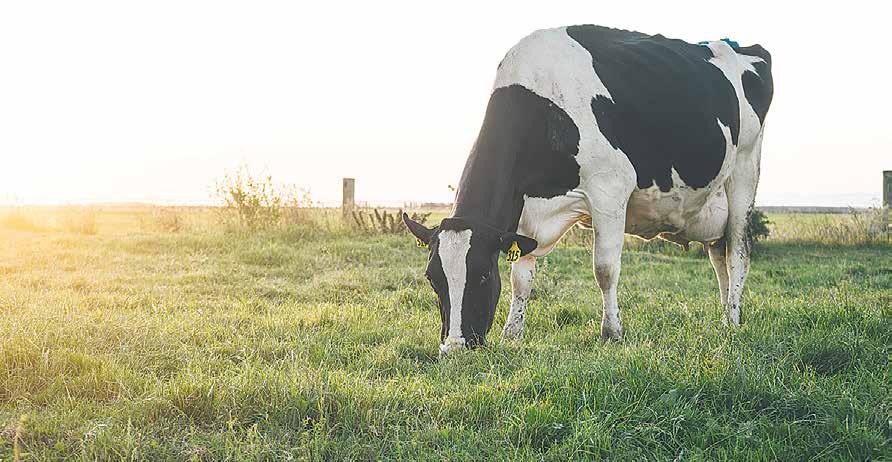
Also called micro minerals, these are copper, cobalt, selenium, iodine and zinc, and all work together to play a crucial role in cow health and performance.
Low copper absorption in cows, combined with low copper content in pasture easily results

in deficiency. Copper is key for proper immune development and deficiency can mean cows are more susceptible to infection.
Cobalt is required for the synthesis of vitamin B12, which is essential for energy metabolism, fibre digestion, and immunity. With our soils generally high in manganese, cobalt uptake by the plant is restricted, resulting in inadequate cobalt levels.
Selenium is vital for immunity, milk production, reproduction, and calf viability. In general, pasture tends to be low in selenium and fertilisers do not sufficiently correct this.
Iodine is essential for energy metabolism, milk production, and reproduction. Not only is pasture uptake of iodine usually low, it is also easily leached in wet spring weather.
Zinc levels are commonly low in pasture, but this trace element is required for production,
• Designed and assembled locally for rugged conditions!


reproduction, animal growth, long-term hoof health, and immunity.
Efficient mineral
dosing
While dusting and water dosing is common, we know that mineral supplementation through feed systems is the most effective way of getting minerals into your cows, whether through an inline feed dispenser or mixer wagon.
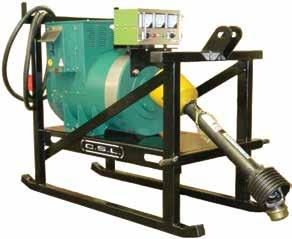

It’s important to note that not one single feed provides the perfect balance of macro and micro minerals, of which
adequate levels are vital for optimum production, successful mating, and pregnancy maintenance. Investing in pasture and feed analysis is the most accurate way to ascertain mineral and trace element levels in your herd’s diet, resulting in an effective mineral supplementation plan this season.
• Chris Balemi is managing director of Agvance Nutrition
“It’s important to note that not one single feed provides the perfect balance of macro and micro minerals, of which adequate levels are vital for optimum production, successful mating, and pregnancy maintenance.”
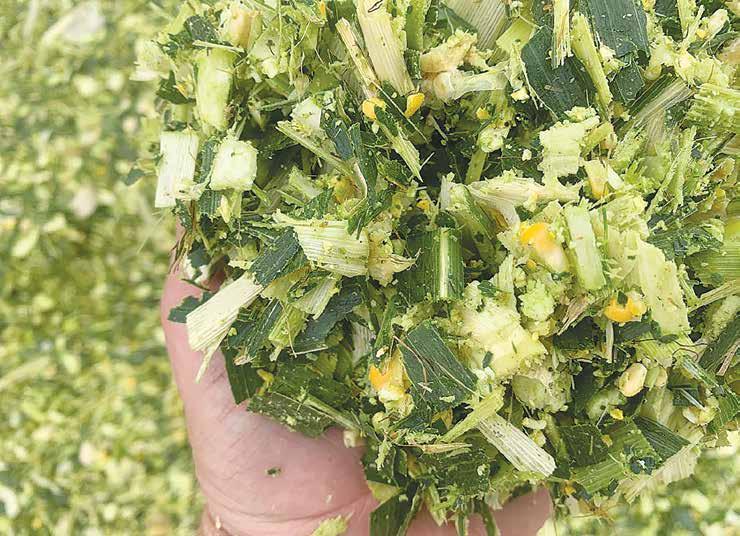
CLAAS HARVEST Centre, Wanaka representative Andy Craig claims that two years ago, they were told that it was impossible to grow maize in Central Otago.
“We have proven everybody wrong, and the hectares continue to grow from Canterbury right down through Southland,” Craig says.
In 2021, Craig was approached by Hyprecision Ag to represent their BRIXX lineup of shortday silage maize on the South Island.
Simultaneously, the Claas Harvest Centre in Wanaka began distributing Hyprecision’s
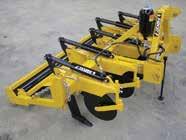
MICHAEL HENNE says
Hyprecision never really had any intention of selling maize seed in New Zealand
“It was a happy accident,” he claims
“It happened because I kept trying to understand why farmers were growing high lignin grain corn instead of more efficient silage maize
“To my surprise, most of them did not fully appreciate the important differences between a silage variety and a grain variety of maize ”
A farmer challenged Henne to demonstrate the superiority of silage maize by bringing some to the market
“And so we did,” he says
trademarked Edge dry inoculant technology.

The combined results, according to Craig, have been nothing short of staggering for South Island farmers.
Mike Hende, Agraforum Consulting in Ashburton, who supports the shift to maize silage,
believes South Island farmers will plant around 2000ha of BRIXX maize this year with every tonne treated with Edge inoculant.
So, what is better with wetter feed?
“Guys in Otago, South Canterbury and Southland see the results in
MICHAEL HENNE and his family operate Hyprecision US, which largely mirrors the New Zealand business but with a slight twist
In America, the company sells the BREVANT brand, which is one of the brands under the Corteva umbrella
the milk vat. It’s that simple,” says Craig.
“The labs reports don’t lie. Since we have been testing our samples using CFA (Canterbury Feed Assessments), we have consistently seen fibre digestibility that routinely hits 65% (neutral detergent fibre
“American farmers are more focused on digestible tonnage,” Henne explains
“For manure management reasons in the CAFO (confined animal feeding) setting alone, my American farmers cannot afford to feed maize that is 50% manure
digestibility 30).
“That alone is a 20% increase in total digestibility versus the national average of 53,” Craig points out.
Hyprecision director of sales Michael Henne explains that fibre digestibility of 65% is essen-
tially a 20% increase in yield – over average digestibility.
Henne worked as a dairy nutritionist in the US and invented the Edge product and its globally-patented applicator system for harvesters and bailers. Henne claims that

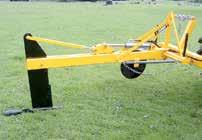

Don’t put good fertiliser on compacted soil which can’t absorb it. If your soil can’t support 15cm root growth and good worm population check for compaction. You could need aeration. In dollar terms, what would 20% production increase mean to your yearly turnover?
YOUR GREATEST ASSET IS THE SOIL YOU FARM. DON’T DESTROY IT!
the Brixx/Edge combination is rapidly becoming the new standard for making feed. “The rate of adoption is higher on the South Island, but the adoption is happening on the North Island as well,” he says.
“When I arrived to New Zealand in 2020, we had large American-style applicators and a container of product. Everyone was curious about Edge, but there was a great deal of scepticism around our wetter feed/ dry inoculant mindset.”
Henne says it was Ingram Engineering (Tuakau) and Mike Kettle Contracting (Hawke’s Bay) that really gave Hyprecision its start and ultimately allowed the company to showcase the Edge technology and its impact on milk production.
“Because we can make both grass and maize at virtually any level of dry matter the Edge product completely shifted the harvest window.”

He believes the wettest feed produced last year was grass bales at 14% dry matter. “They looked like pancakes, but they fed out beautifully,” he says.
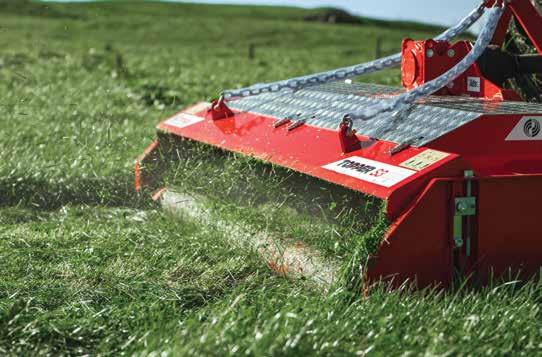
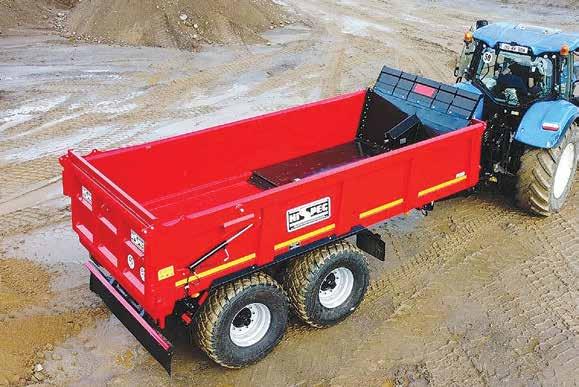
in areas with restricted height.
MARKALREADY WELL known for its Kompactor range of push off trailers, Ireland-based HiSpec Engineering has extended the technology to its latest dump trailer with the push-off headboard system for unloading.
Offering a heaped load volume of 14.5 cubic metres, the PD20 trailer is said to have a carrying capacity of around 20 tonnes, depending on material.
Unlike conventional tipping dump trailers, the PD20 is offloaded using a hydraulically operated moving-floor type headboard, with a push-off capacity of 28 tonnes, that pushes the load from the body once the upand-over tailgate has been raised.
By emptying the load this way, rather than vertically tipping, the trailer can be offloaded on slopes without the risk of overturning, while also allowing operation
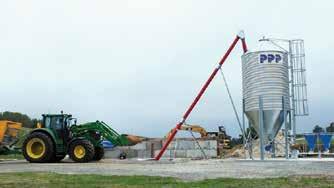

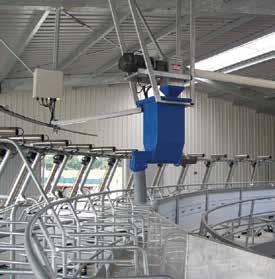
It is also said to make it easier to offload and spread a load while on the move. Once the trailer has been emptied and the tailgate closed, the operator can move off while the headboard is retracting, so avoiding the delay of waiting for the body to lower when using a tipping trailer.
The configuration, that removes the need for hydraulic tipping rams and hinge points, means the PD20 has a much lower centre of gravity the centre than a conventional dump trailer, while also offering a loading height of only 2.39m.
The floor of the trailer body is constructed from 8mm thick Hardox steel, while 6mm Hardox steel is used for the body sides.

The hydraulically sprung drawbar is equipped with a bolt-on swivel hitch, while the commercial grade 127mm section axles are fitted with 420×180 air/hydraulic brakes and 525/65 R20.5 173F tyres.
FRENCH MACHIN-
ERY manufacturer Kuhn has expanded its range of mower-conditioners fitted with rollertype conditioners, with the addition of the new trailed FC 3155 TLR and FC 3555 TLR models.
These have working widths of 3.10m and 3.50m respectively.
The side-pull drawbar units, with hydraulically offset mowing elements, feature Kuhn’s SquareFlex roller conditioners that incorporate mechanically driven
240mm diameter rollers that are claimed to be synchronized for life.
The unique profile of the polyurethane rollers ensures that plants and stalks are crimped, irrespective of the direction the crop is presented.
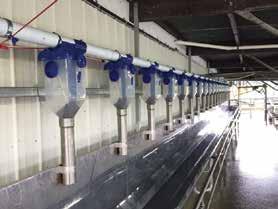
Driven by a gear box to rotate at 780rpm, the pres sure exerted by the roll ers is easily adjusted, while also allowing them to move apart to allow foreign objects to pass through.
mined groove to allow the disc to freewheel and protect the gear train.
The “sealed for life” cutter-bar requires no maintenance and is equipped with large diameter gear assemblies and double-row angular contact ball bearings for robustness and dura-
Equipped as standard with the FastFit quick knife release system, a leaf spring layout ensures that there is constant pressure on the blade securing pin,
with rapid change of any blunt or damaged blades. A spring suspension system ensures efficient ground pressure reduction of the mower unit while also ensuring positive ground contour adaptation.
The clever Gyrodine headstock ensures that the PTO input shaft remains straight when undertaking tight turns, allowing the machine to manoeuvre tightly in narrow plots or irregularshaped paddocks.
– Mark Danielservicing or warranty claims are processed through an authorised Hustler dealership.
HUSTLER EQUIPMENT, manufacturer of livestock feeding machinery, has announced the introduction of a new, five-year warranty scheme for all their products manufactured in 2023 and later.

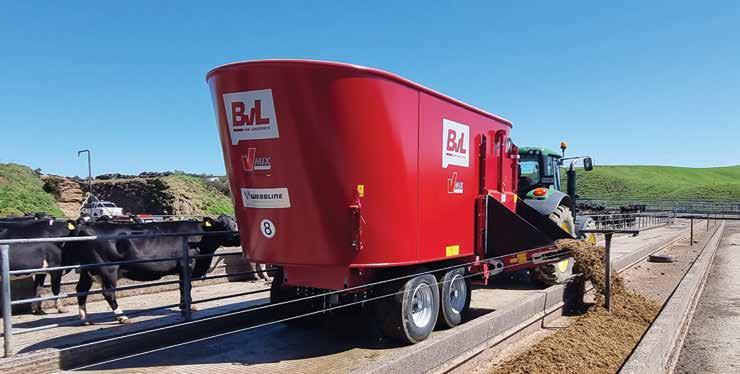
The company says this initiative aims to redefine customer assurance and satisfaction in the agricultural machinery industry.

Effective immediately and including all machines manufactured since January 2023, all machinery gets a 5-year warranty against manufacturing defects for the original purchaser for products retailed from an authorised Hustler dealership.
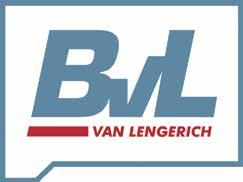
For model years 2022 and older, customers can refer to the previous country-specific warranty period, as outlined on the Hustler website.
To benefit from all the advantages of the warranty, customers can easily register their Hustler product online at hustlerequipment.com/ warranty and ensure that
Special conditions of the warranty scheme are that Puckboard polyethylene floors are covered for 10 years, except for fading and conditions caused by excessive ultraviolet light (UV) or outdoor exposure.
Components, which includes hydraulic components, gearboxes and chains, electrical components, hydraulic and fluid hoses, and bearings that are damaged due to manufacturing defects, are covered for two years.
Paint and finish are covered for one year, while normal wear-andtear from general use is not covered.
Wearing parts such as batteries, filters, tyres, towing eyes, and brake pads are covered against damage due to manufacturing defects for the original purchaser, but not for normal wear, consumption, or expiration. Labour is covered for all warranty repair travel, but mileage is excluded.
@dairy_news facebook.com/dairynews
TYRE SPECIALIST Yokohama TWS has launched a multi-brand smartphone app designed to help farmers to configure the right pressure for their tyres, according to axle loads, speed, size and tire brand.
The Agro Tyre Pressure app, developed together with other major tire manufacturers, also puts safety, fuel savings and soil protection to the fore, without the need to trawl through manufacturer’s data books or product sheets or contact dealers.
Francesco Fusc, Yokohama TWS, says the app gives a huge boost to agri business in terms of efficiency, by letting farmers easily find the correct tire pressure to set according to tire brand of their agri vehicles and field work, right in the moment with just a few clicks. “This is just another way that all of us at Yokohama TWS are working to put new technologies in the hands of our customers, so they can focus on their business.”
The Agro Tyre Pressure app is ready for download to iOS and Android phones. Available in four languages, (English, French, German and Polish), the app combines databases of 12 leading brands, including the Yokohama TWS portfolio of Trelleborg, Mitas, Maximo and Cultor, from The App Store.

1:
2:
3:
STARTS: FRI 25 AUG 2PM | ENDS: THU 31 AUG 7.30PM
• Unused New Holland Megacutter 860P Mower
• Unused New Holland Duradisc F300 Mower
• New Holland Square Baler BB1290 Plus
• New Holland Square Baler BB9060
• New Holland Square Baler BB950A
• New Holland Roll Baler 135 Combi Bale Wrap
• New Holland Roll Baler BR6090 Combi Wrap
• New Holland Roll Belt 150 Cropcutter Baler
• New Holland Roll Belt BR740 Cropcutter Baler
• Lely Roll Baler 245 Combi Bale Wrapper
• New Holland T7-250, 7,571hrs & Front 3PL
• New Holland T6-180 1331hrs Cab
• New Holland T5-105 6736hrs & Loader
• New Holland T4-105, 2,703hrs & Loader
• New Holland TS110A 6334hrs & Loader
• New Holland T6050 4856hrs & Loader

• New Holland T6030 4252hrs & Loader
• Kubota M7152 691hrs & Loader
• Kubota M7151 868hrs Cab
• Kubota M7171 2,765hrs & Front 3PL
• Kubota M135X 6,272hrs & Loader
• Kubota M126X 6,742hrs & Loader
• Kubota M100GX 4,650hrs Cab
• Kubota M9540 3,363hrs & Loader
• Massey 5445 2381hrs & loader
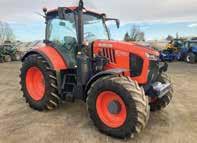
• Case IH JXU105 4620hrs & loader
• Case IH CX70 6,780hrs & Loader
• Claas 640 Arion 7731hrs Cab
• Landini Ghibi 90 3901hrs & Loader
• Unused Quickie C13S loaders & 4in1
Hay Equipment
• New Holland FR9080 Forage Harvester
• New Holland 8 Row Maize Front
• Unused Kuhn GMD 310 3pl Mower
• Unused New Holland ProTed 690 Tedder
• Unused New Holland ProTed 880 Tedder
• Unused New Holland C820 Rotor Hay Rake
Contact: Bryan McNeilly
M: +64 273 580 432
• McHale 991B Trailing Bale Wrapper
• Hustler Bale Feed Out Unrolla LM105
• Hustler Soft Hand Bale Grab
• Fella SM 2460 3Pl Disc Mower
• Robinson Super Comby Feed Wagon
• Giltrap MSX100 Feed wagon
• SIP Star 850/26 & Spider 900/8 Rakes
Tillage & Seeders
• Unused NH Mouldboard 5 Plough
• Unused NH Mouldboard 4 Plough
• Kuhn Multi-Master 123 5 Plough

• Gaspardo Gigante 4mtr Disc Seeder
• Breviglieri 3mtr 3Pl Rotory Hoe
• APV PS250 Seeder & Tyned Weeder
• Hustler Katipoi 890 3PL Sprayer
• Vaderstad RX450 Roller Trailing
• Maschio Powerharrow DMR3000 SD

• Aitchison Cambridge Roller 3m
• Sam 5 Tonne Trailing Spreader
ATV & Lawn Mower
• Kubota RTV-X1120 Side by Side

• Kubota RTV-900 Side by Side
• Kubota F3680 Lawn Mower
• Kubota GR1600 Lawn Mower
• Kubota BX2670 Lawn Mower
• Cub Cadet Lawn Mower
Location: 11 Athy Pl, Wiri Auckland and 155 Flygers Line, Palmerston North.
Inspections: Mon 28 - Thu 31 between 9am - 4pm
STARTS: FRI 25 AUG 2PM | ENDS: THU 31 AUG 7PM
Tractors
• New Holland T4.100F 0hrs, Narrow
• New Holland Boomer 50, 0hrs & Loader
• New Holland Boomer 35, 0hrs & Loader
• New Holland Boomer 25, 0hrs & Loader
• New Holland T7-185 5,910hrs & loader
• New Holland T7-165 1,086hrs & Loader
• New Holland T6-175 3,883hes & Loader
• New Holland T6-175 7,323hrs & Loader
• New Holland T7050 9260hrs & loader
• New Holland T6070 4,170hrs Cab
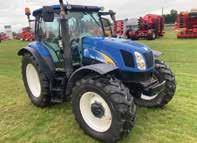
• New Holland T6050 4,074hrs & Loader
• New Holland T6050 5,140hrs & Loader
• New Holland T6030 3,195hrs & Loader
• New Holland TS135A 8726hrs & loader

• Kubota M7171 2,295hrs & Loader
• Kubota M135GX 6286hrs & loader
• Case IH MUX135 5,400hrs & loader
• Case IH CVX1190 8,990hrs Cab
• McCormick MC105 & loader
• Deutz K610 3,398hrs & Loader
• Massey Ferguson 6,368hrs 8680 duals
• John Deere 6620 & Loader
Grape Harvester
• Braud 9060L SP 4,495hrs Harvester
Tillage & Seeders
• Unused NH Mouldboard 5 Plough
• Unused NH Mouldboard 4 Plough
• Vaderstad Rapid RDA800S Disc Seeder
• Vaderstad Rapid RDA600S Disc Seeder
• Vaderstad Rexius RS 820 Roller
Contact: Bryan McNeilly


M: +64 273 580 432
• Horsch Simba Pronto DC6 Disc Seeder
• Horsch Simba Pronto DC6 Disc Seeder
• Monosem NG4 plus Vac Planter 12 Row
• Kverneland Monopill SE 18 Row Planter
• Taege 300EDW 3mtr Tyne Seeder
• Aitchison Roller Drill 20row Seeder
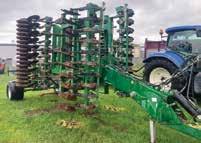
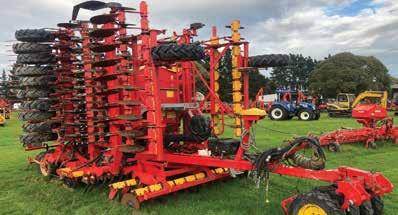
• Alpego RK350 Power Harrow Disc Seeder
• Jean De Bru Monoliner VRV36 Offset Disc.
• Simba Great Plains SL500 Cultivator
• Amazone Catros 5501-T, 5.5m Speed Till
• Lemken Diamante Reversable Plough 7 Farrow

Hay Equipment
• Unused Khun 8131 Hay Rake
• Unused New Holland ProTed 690 Tedder
• Unused New Holland ProTed 880 Tedder
• Unused New Holland C820 Rotor Hay Rake
• Unused New Holland Megacutter 860P Mower
• Unused New Holland Duradisc F300 Mower
• Gowell Roll Baler F1 F125 Combi Bale Wrap
• Gowell Roll Baler G5020 Trailing Wrapper
• Massey Ferguson 187 Square Baler
• Kongskilde GSX3206 3Pl Mower
• Kongskide VM22-2 Mixing Wagon
• Giltrap RG21 Side Feed Out Wagon
Extras
• Mailleux Loader Frame MX T10
• Agris Quip 3Pl Spreader
• Husqvarna R216 Ride on Lawn Mower
• Husqvarna TC342 Lawn Mower
• Tyre & Rims, GP Buckets
Location: 81 Branston Street, Hornby South, Christchurch
Inspections: Mon 28 - Thu 31 between 9am - 4pm
Buyer’s Note: This is an Online BidNow Auction only and is to be conducted on Manheim website only. You must register to Bid on www.manheim.co.nz
Buyer’s